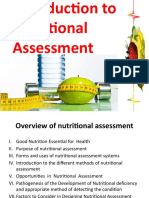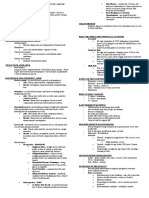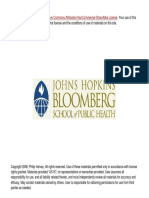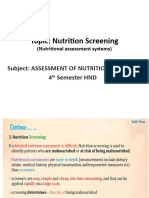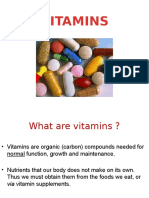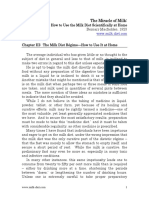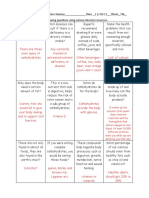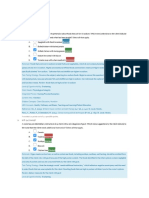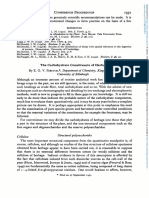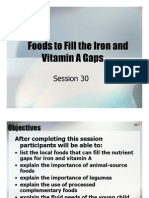Lecture Notes on Nutritional Surveys, Surveillance, and Counselling
=====================================================================
Date: March 4, 2025
Table of Contents
-----------------
1. Nutritional Survey and Nutritional Surveillance (G1)
2. Application of Surveillance (G2)
3. Sentinel Site Surveillance (G3)
4. Nutritional Epidemiology (G4)
5. Food Balance Sheet (G5)
6. Types of Nutrition Surveillance (G6)
7. Counselling Ethics (G7)
8. Application of Nutrition Counselling (G8)
9. Community Counselling on Vitamin Deficiency (G9)
10. Community Counselling on Mineral Deficiency (G10)
---------------------------------------------------------------------
1. Nutritional Survey and Nutritional Surveillance (G1)
---------------------------------------------------------------------
Nutritional Survey:
- Definition:
A systematic collection of data on the nutritional status of a specific population at one
point in time or over a short period.
- Purpose:
• Identify prevalence of malnutrition (undernutrition and overnutrition)
• Determine micronutrient deficiencies
• Assess dietary intake patterns and lifestyle factors
• Inform policy-making and prioritize interventions (e.g., supplementation, fortification)
- Methods:
• Anthropometric Measurements (height, weight, mid-upper arm circumference)
• Biochemical Tests (hemoglobin levels, serum vitamin levels)
• Clinical Assessments (observing physical signs of deficiency)
• Dietary Surveys (24-hour recalls, food frequency questionnaires)
Nutritional Surveillance:
- Definition:
Ongoing, systematic monitoring of nutrition indicators in a population over time.
- Key Features:
• Continuous or repeated data collection
• Tracks trends and patterns rather than a one-time snapshot
• Early detection of emerging nutritional issues (e.g., famine, food insecurity)
- Uses:
• Trigger timely interventions (e.g., supplementary feeding programs)
• Inform policy and resource allocation
• Evaluate effectiveness of nutrition programs
---------------------------------------------------------------------
2. Application of Surveillance (G2)
---------------------------------------------------------------------
- Policy and Program Development:
Uses surveillance data to help prioritize nutrition programs (e.g., iron supplementation
for anemia).
- Early Warning Systems:
Detects rising malnutrition rates or sudden food shortages in conflict or disaster areas.
- Program Evaluation:
Assesses the success or limitations of interventions (e.g., school feeding, food
�fortification) by comparing before-and-after data.
- Research:
Provides valuable epidemiological data on the links between diet, disease, and socio-
economic factors.
---------------------------------------------------------------------
3. Sentinel Site Surveillance (G3)
---------------------------------------------------------------------
- Concept:
Uses selected “sentinel” sites to represent the broader population.
- Site Selection Criteria:
• Areas with high vulnerability (e.g., food-insecure regions)
• Representative of diverse demographics (rural vs. urban, various socio-economic
backgrounds)
- Advantages:
• Cost-effective compared to nationwide surveys
• Timely data collection and quick identification of at-risk groups
- Limitations:
• May not fully represent the entire population if sites are not chosen optimally
• Requires consistency in data collection methods
---------------------------------------------------------------------
4. Nutritional Epidemiology (G4)
---------------------------------------------------------------------
- Definition:
The study of the role of nutrition in disease development and overall health within
populations.
- Core Areas:
• Diet-Disease Relationship: Links between dietary patterns (e.g., high sugar intake) and
conditions such as obesity, diabetes, and heart disease.
• Nutritional Assessment Methods:
- Food frequency questionnaires (FFQ)
- 24-hour dietary recalls
- Food diaries
• Study Designs: Cross-sectional, case-control, cohort studies, and randomized
controlled trials.
- Challenges:
• Accurately measuring dietary intake (avoiding under- or over-reporting)
• Addressing the interplay of genetics, lifestyle, and environment.
- Applications:
• Development of public health dietary guidelines
• Identification of nutritional risk and protective factors
---------------------------------------------------------------------
5. Food Balance Sheet (G5)
---------------------------------------------------------------------
- Definition:
A statistical tool (often produced with the FAO) that shows the supply and utilization of
food within a country.
- Components:
• Supply: Production, imports, and stock changes of food commodities.
• Utilization: Human consumption, animal feed, seed use, processing, waste, and
exports.
- Uses:
• Estimating per capita food availability
• Identifying gaps between food production and consumption needs
• Guiding agricultural, trade, and food security policies
� - Limitations:
• Does not capture regional disparities
• Provides a national overview rather than detailed individual dietary data
---------------------------------------------------------------------
6. Types of Nutrition Surveillance (G6)
---------------------------------------------------------------------
1. Passive Surveillance:
• Relies on routine data (e.g., hospital/clinic records).
• Cost-effective but may under-report cases.
2. Active Surveillance:
• Involves proactive data collection (e.g., door-to-door surveys).
• More accurate but resource-intensive.
3. Sentinel Surveillance:
• Uses selected sites for continuous, targeted data collection.
• Balances cost and representativeness.
4. Periodic Surveys:
• Conducted at regular intervals (e.g., every five years).
• Useful for tracking long-term changes but less timely.
---------------------------------------------------------------------
7. Counselling Ethics (G7)
---------------------------------------------------------------------
- Confidentiality:
• Maintain strict privacy of client information.
• Share data only with necessary professionals.
- Autonomy:
• Respect clients’ rights to make informed decisions.
• Provide clear, unbiased information.
- Non-maleficence ("Do No Harm"):
• Ensure advice does not cause harm.
• Avoid judgmental or stigmatizing language.
- Beneficence:
• Act in the client’s best interest to promote health.
- Cultural Sensitivity:
• Respect dietary restrictions, religious beliefs, and cultural practices.
---------------------------------------------------------------------
8. Application of Nutrition Counselling (G8)
---------------------------------------------------------------------
- Clinical Settings:
• Provide individualized dietary plans for managing chronic diseases (e.g., diabetes,
hypertension).
- Community Programs:
• Conduct group sessions on balanced diets, portion control, and healthy cooking.
• Tailor interventions to local food habits and available resources.
- Schools and Workplaces:
• Promote healthy lunch options and nutritional education.
- Behavior Change Techniques:
• Utilize motivational interviewing, goal-setting, and self-monitoring strategies.
- Follow-Up and Evaluation:
• Regularly assess progress and adjust plans as needed.
---------------------------------------------------------------------
9. Community Counselling on Vitamin Deficiency (G9)
---------------------------------------------------------------------
- Common Vitamin Deficiencies:
� • Vitamin A: Linked to night blindness and weakened immunity.
• Vitamin D: Deficiency may cause rickets in children and osteoporosis in adults.
• Vitamin C: Lack can lead to scurvy (e.g., bleeding gums, poor wound healing).
• B-Complex Vitamins (B12, Folate): Deficiencies can cause anemia and
neurological issues.
- Strategies:
• Dietary Education: Encourage consumption of fruits, vegetables, dairy, and
fortified products.
• Supplementation: Provide vitamin capsules (e.g., Vitamin A for children, Vitamin D
for limited sun exposure).
• Fortification: Enhance staple foods (e.g., flour, cooking oil) with essential vitamins.
• Public Health Campaigns: Increase awareness of deficiency signs and prevention.
- Monitoring and Follow-Up:
• Regular community clinic check-ups.
• Biochemical testing for at-risk groups (e.g., pregnant women).
---------------------------------------------------------------------
10. Community Counselling on Mineral Deficiency (G10)
---------------------------------------------------------------------
- Key Minerals:
• Iron: Essential to prevent anemia; found in red meat, beans, leafy greens.
• Iodine: Prevents goiter and developmental issues; primarily sourced from iodized
salt.
• Zinc: Supports immunity and growth; available in meat, seafood, and legumes.
• Calcium: Critical for bone health; sourced from dairy and leafy greens.
- Educational Messages:
• Diverse Diet: Promote variety to ensure balanced mineral intake.
• Food Combinations: Pair vitamin C-rich foods with iron-rich meals to enhance
absorption.
• Cooking Methods: Advise on techniques that preserve mineral content (avoid
overcooking).
- Supplementation and Fortification:
• Recommend iron-folic acid supplements for pregnant women.
• Encourage use of iodized salt and fortified cereals.
- Behavior Change:
• Educate on proper storage and use of iodized salt.
• Increase public awareness of health risks associated with mineral deficiencies.
---------------------------------------------------------------------
Final Implementation Tips
-------------------------
1. Data Collection & Analysis:
• Use accurate measurement techniques and standardized tools.
2. Policy Integration:
• Link surveillance findings to practical interventions (e.g., food fortification, school
feeding programs).
3. Community Involvement:
• Engage local leaders, schools, and health workers in nutrition education.
4. Monitoring & Evaluation:
• Continuously assess intervention effectiveness and adjust strategies based on
feedback.
=====================================================================
End of Lecture Notes





























